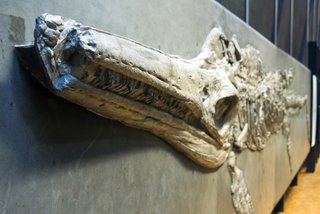The Swabian Alb and Africa
Thanks to numerous and well-known ammonites collected from the same limestone bed, my specimen from the Zollernalb is much easier to date than the specimen from Ethiopia –hunting for fossils on this field for decades finally paid off! The Somalinautilus specimen proves a faunal exchange occurred between widely separated marine areas during the Late Jurassic, 150 million years ago. The only plausible explanation is that geographic barriers normally hampering such a wide species distribution lost their function during times of high sea-level. In addition, my literature research showed that nautilids of the genus Somalinautilus migrated into the seas of present-day Central Europe during several short intervals in the Middle Jurassic. Unexpectedly, when looking for such material in our own collection, I found another specimen of this genus from the Middle Jurassic of eastern Swabia. That specimen became part of the collection in 1949 and nobody since then had been able to identify it.
The results of my “Corona project” are now published in the international journal “Neues Jahrbuch für Geologie und Paläontologie”. Encouragingly, the reviewers of the journal were pleased that somebody has started to become interested in fossil nautilids. I am curious as to whether my publication will encourage more research on this topic. Perhaps more specimens of this small nautilid will be discovered – either in the field or in other scientific collections.






Comments (0)
No Comments